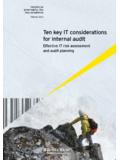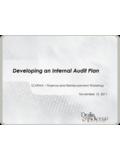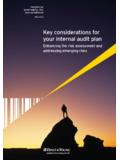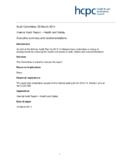Transcription of Internal Audit checklist - InfoHouse
1 1 Internal Audit checklist Policy q Verify required elements q Verify management commitment q Verify available to the public q Verify implementation by tracing links back to policy statement q Check review/revisions q Determine how communicated q Check if temps are trained q Check if vendors/suppliers were notified of policy Aspects q Verify organization has approved procedure to identify aspects q Verify/determine process for identification, ranking of significant aspects q Verify significant aspects are managed q Verify appropriate document links (ID links) are in place q Verify training needs have been met as related to significant and job activities that can result in impacts q Verify objectives and targets are linked to significant aspects with appro. ID numbers q Determine how aspects are communicated q Verify up to date q Interview/sample employees for awareness Regulatory Requirements q Verify requirements are in place and managed q See if legal requirement are in Standard Operating Procedures (related to significant) q Verify training has been conducted q Check identifiers are in place and linked q Determine if communicated to employees q Verify accessible and available q Verify appropriate links to related documents Objectives and Targets q Verify objectives and targets are consistent with significant aspects and policy q Do objectives and targets consider pollution prevention and other preventive measures q Verify individual roles and responsibilities on objectives and targets are defined q Are objectives specific and measurable?
2 Q Are timeframes set and met? q link back to aspects? q Process for review and revision q Process for changing target dates q Identify how progress is tracked and communicated to management 2 q Ensure monthly operating reports (or method) include status of objectives including measurable performance indicators Environmental Programs q Review improvement programs to assure link back to significant aspects and objectives and targets q Verify roles and responsibilities are defined q Verify the improvement program will accomplish objective q Determine methods used to measure and report progress q Determine if improvement programs are supported by sufficient resources q Determine if individual is assigned responsibility or implementation and oversight include reviewing and updating q Verify that new projects/processes/modifications are subject to EMS requirements Structure and Responsibility q Ensure that organizational chart is consistent with the EMS q Verify roles, responsibilities and authorities are clearly defined in Environmental Programs improvement plans.
3 Work instructions and procedures q Interview EMS Steering committee chairperson and verify appropriate resources are available to fulfill requirement of the EMS q Verify roles and authorities of steering committees q Review job description or memo, or documentation of management representative to ensure responsibilities and authorities are defined q Ensure work groups, steering committee roles are defined and is consistent with org. chart or structure q Although not required, is there a manual that defines the EMS structure and responsibilities Training, Awareness and Competence q Verify a training, awareness and competency procedure has been developed q Verify the organization has identified the job functions that may have significant environmental impact. q Determine if training needs have been identified q Review supporting documentation q Verify that all employees whose work may impact he environment have been identified q Verify process to review training records to assure required training has been scheduled and given q Verify employees (with potential for impact) have received the appropriate training and are certified as competent q Have organization explain process for EMS refresher training q Verify employees have received appropriate emergency response training q Verify that employees have received policy and EMS procedures training q Interview (sample) employees to assure proper understanding and are competent based upon criteria such as: licenses, experience, work instruction training, supervisor signoff, etc.
4 3 q Verify employees whose work may impact have been trained on consequences of deviating from procedure q Verify employees have been made aware of aspects and significant aspects of their department and the benefits of following approved EMS procedures Communication q Verify by sampling the process of how EMS information is communicated between various levels and functions q Verify by sampling, the process for receiving, documenting and responding to external communications from interested parties (regulators, customers, public etc.) q Determine by interviews the raising of employee awareness of EMS policies, objectives and targets and improvement programs q Determine how the department communicates results of audits and management review to employees q Have department provide evidence of external communication to the public q Review examples of how the organization determines to communicate its significant aspects (note only states to consider and record, not necessarily communicate to outside parties.)
5 Documentation q Verify EMS Manual (optional) q Verify EMS Procedures q Verify meeting (steering committee, EMS team) meeting records q Verify Environmental Directory (optional) q Verify EMS organization charts q Verify the organization has clear documented references to related EMS procedures, work instructions, legal requirements, etc. q Verify manual has been reviewed, understood and communicated to employees (awareness training) q Trace through sample of documents, ensuring that referenced documents exist and are readily available Document Control q Determine document control procedure or process clearly established responsibility for creation and modification of various types of EMS documents q Check EMS organizational chart and job descriptions for those responsibilities and roles governing review, approval, revision and distribution of documents q Verify that documents have proper revision status, approval, signature.
6 Effective date and appropriate links to related documents q Verify a master list exists to identify all controlled documents q Verify the department has appropriate retention schedules q Verify there is a well defined system to indicate the names and locations of all holders of controlled documents q Verify that documentation essential to operations (linked to aspects and impacts) is available to employees in those locations 4 q Verify that obsolete or invalid EMS documents are promptly removed and appropriately marked. q Have the department explain this process q Check to see if they have established an obsolete file folder or location q Check for documents (historical) retained for knowledge preservation are so marked q Check for evidence that EMS documents (in use) do not have hand written changes or revisions q Verify that EMS documentation is periodically reviewed and maintained- have the department explain this process Operational Control q Verify operation and maintenance activities that can have significant impact have been identified and that associated work instructions have been prepared q Interview key personnel and look for evidence of a systematic approach to the identification of the aspects and impacts of the organizations activities q Verify that documented work instructions are in place to manage the significant aspects q Verify that those persons who can have adverse impact have received the appropriate training and there is documented evidence they are competent to perform associated task q Verify that sufficient organizational controls are in place and are maintained to ensure that the significant
7 Aspects are managed to prevent adverse impacts. q Check for evidence to suggest that equipment/procedures (or lack thereof) in the work environment is not suitable/suitable to achieve the defined targets and objectives q Verify procedures/plans address such issues as emergency organization and responsibilities, listing of key personnel, details of emergency equipment/services available, Internal and external communication plans, actions to be taken for different types of emergencies or incidents, information on hazardous materials, training programs and testing procedures (start-up or shut-down procedures during emergency events if tied to significant aspects) Emergency Response and Preparedness q Verify organization has appropriate emergency response plans in place q Verify that the plans have a review schedule and their is documented evidence of reviews, particularly after occurrence of an accident or emergency situations q Verify that employees have received appropriate emergency response training q Verify that the organization has an emergency drill schedule and has documented evidence of drills conducted (where practicable) Review the organization s external communication plans for emergency situations Monitor and Measurement q Verify EMS measurement procedure* q Verify technical calibrations procedures* q Verify regulatory compliance assessments* 5 q Verify that the organization submits an operating report (on an established frequency)
8 Which provides data on its operations and the status of its objectives and targets and performance indicators q Verify key monitoring equipment has been identified and is calibrated and maintained q Verify a system identifying the frequency, means and methods of calibration are in place q Verify that calibration records are maintained and have appropriate links and identification numbers q Identify how performance indicators are chosen, reviewed and revised q Ensure that performance indicators are objective, verifiable, reproducible and consistent with the EMS policy q Verify that a schedule of regulatory compliance inspections is in place and inspections are performed and documented q Have the organization discuss the process used to address noncompliance conditions * not required to have separate procedures but recommended Nonconformance and Corrective and Preventive Action q Determine process used in investigating EMS non-conformance q Determine process used for mitigation on non-conformance q Verify procedure (process) addresses means for identifying the root cause and implementing effective corrective actions (CA s)
9 Q Review any open and completed CA s and ensure action plans have been developed, followed and closed out as scheduled q Determine if there is evidence of lack of understanding or commitment on the part of department management or their staff regarding corrective or preventive action q Determine if corrective or preventive actions implemented are appropriate to magnitude of the problem and resolve the environmental impact from re-occuring q Verify that corrective actions are recorded and presented to management for review q Verify there is a process to track the status of corrective or preventive actions Records q Verify the organization has identified the required records for implementation and operation of the EMS q Verify the person responsible for EMS records maintenance, control and disposal of records q Verify that records are readily available and identifiable (proper ID numbers) q Ensure a records retention schedule has been developed and implemented q Check to see if records are indexed, filed, stored and maintained to provide secure storage q Examine and evaluate a variety of records (including training) when auditing each EMS functional area q Check for a master log (EMS Directory) of EMS records 6 q Does the organization have a procedure for storage of various records including electronic EMS Audits q Remain within the scope of the Audit q Remain objective q Gather objective evidence to draw conclusions q Document Audit results q Interpret policies and procedures and determine conformance with the standard q Develop an Audit schedule (annually) q Train Audit team (document training)
10 Q Develop Audit plan q Schedule Audit and necessary resources- meeting room, appropriate people are available, etc. q Conduct opening meeting- q Tour facility- to gain understanding of facility (if auditor doesn t know facility operations) q Perform Audit q Auditors meet to discuss preliminary results- group should reach consensus on findings, if consensus not reached, then lead auditor makes the call q Conduct closeout meeting discuss Audit results objectively ie, strengths, weaknesses, non-conformances- this is not a discussion. q Issue Audit report as discussed in close out meeting (can document potential non-conformance discussions with notes and understandings stating what, who, correction) (Should have some way to follow up with regulatory non-compliance issues) q Review previous Audit report and check on status of any previous findings. Note; findings not corrected can be considered a major deficiency q Check for corrective action status including a
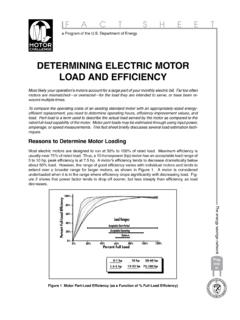
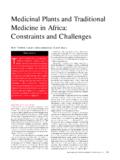
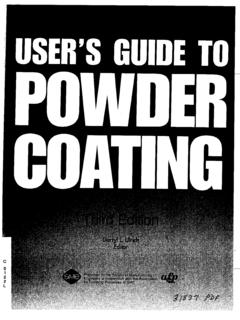
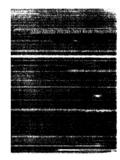
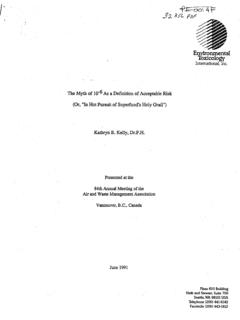
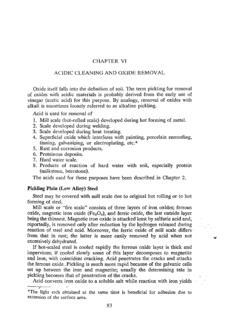
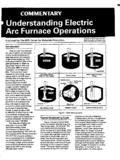
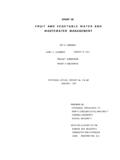
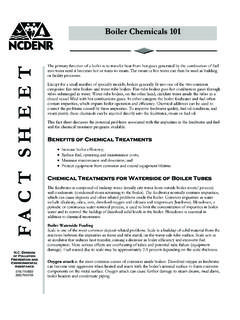
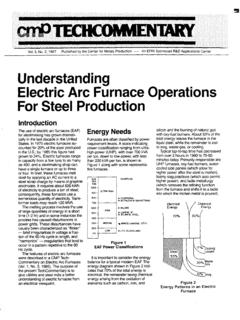


![INTERNAL AUDIT REPORT: [PROCESS] - MP …](/cache/preview/4/a/4/9/9/6/0/7/thumb-4a499607465ded8ca5448335a1bab47f.jpg)
